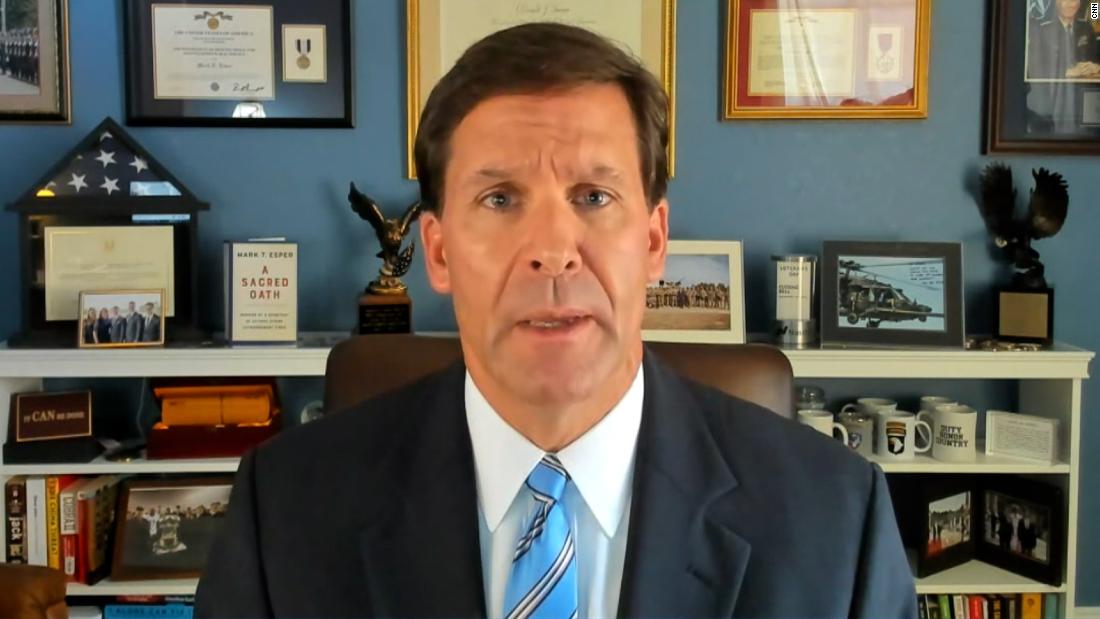Is It Time to Rethink the ‘American Way of Punishment’?
America’s harsh sentencing policies over the past three decades have condemned individuals to lengthy prison terms that offer little opportunity for rehabilitation, fail to provide them with a path for a successful return to civilian life, and have little impact on public safety, a webinar was told Wednesday.

America’s harsh sentencing polices over the past three decades have condemned individuals to lengthy prison terms that offer little opportunity for rehabilitation, fail to provide them with a path for a successful return to civilian life, and have little impact on public safety, a webinar was told Wednesday.
The emerging debate over changing the U.S. justice system’s emphasis on retribution and revenge at the expense of rehabilitation offers a long-awaited opportunity to reduce mass incarceration, speakers said.

Dr. Christine Montross
“It gives us an opportunity to understand what we do intentionally to people when we incarcerate them,” said Dr. Christine Montross, Associate Professor of Psychiatry and Human Behavior at the Warren Alpert Medical School of Brown University, and author of “The Madness of Incarceration.”
“We strip away their social connections, their family connections, their community connections, and what’s the downstream consequence of that?” she told a webinar on “Rethinking the American Way of Punishment.”
“Why do we believe that is effective when 95 percent of the people that we incarcerate return to their communities? How does it serve us to have people be less mentally well when they return to their communities than when they left?”
Instead, the punishment regime adopted by states since the 1990s is fueling a ”geriatric explosion” in the nation’s prisons that’s likely to overwhelm the correctional system’s ability to provide the services needed for aging prisoners, warned criminologist Frank Baumgartner of the University of North Carolina-Chapel Hill.
“For the first time there are more people over the age of 55 in American prisons then there are people under the age of 25,” said Baumgartner.
“It’s only going to get worse the next time we have a Coronavirus―or another―pandemic.”
Baumgartner traced the aging of America’s prison population to decisions by dozens of state legislatures to eliminate parole in response to the “tough on crime” rhetoric sweeping the country in the 1980s and 1990s.
”By the mid-1990s, every state in the nation had life without parole (sentences) on the books,” said Baumgartner, noting that they were often accompanied by harsh polices such as “three-strikes laws” which penalized a third offense—even if it were a nonviolent one—with life in prison.
The Consequences of the Punishment ‘Arms Race’
The laws, passed during what Baumgartner described as an “arms race” between politicians of both parties to be tougher on crime than the other side, contributed to the U.S. phenomenon of mass incarceration. More than two million Americans are behind bars today―representing some 20 percent of those incarcerated worldwide even though the U.S. has just 5 percent of the world’s population.
Reversing the trend will require a profound shift in attitudes towards the purposes of punishment―from retribution to a more measured and less vengeful approach at every level of the justice system, other speakers at the webinar said.
“We live in an era of punitive excess,” said Jeremy Travis, Executive Vice President of Criminal Justice at Arnold Ventures, and a leading proponent of policies to reduce mass incarceration.
“There’s a mood afoot in the country where there is a recognition in a bipartisan way that our country has gone off the rails, or gone way off track in terms of the use of prison, and more broadly, in the use of the coercive powers of the state through policing and probation and parole and school discipline and the like―(a recognition) that we have to find some ways to rein that in.”
Wednesday’s webinar, the first of two days of sessions attended by journalists and justice policy professionals from across the country, was organized by the Center on Media, Crime and Justice—publisher of The Crime Report—to explore the emerging debate over alternatives to current punishment policies.
Although the debate has engaged criminologists and practitioners, the extent of public support for such a wholesale reexamination is unclear—especially as the recent rise in violent crime during the pandemic has fueled a revival of the “tough on crime” rhetoric of past decades.

Martha Minow
A further complication is the vested interests across the justice system in resisting change, said Martha Minow, former dean of Harvard Law School and author of “Vengeance and Forgiveness.”
She noted that while concepts like “restorative justice” were gaining traction in many jurisdictions, change would be an uphill struggle.
”Let’s be frank about the political economy benefits of the mass incarceration system,” she said. “(Restorative justice) doesn’t fund jobs for unionized prison employees. It doesn’t help elected prosecutors have another notch on their belt.
“I think we have some deeper incentive systems that we need to alter, to undo what brought us to this point.”
There are signs that many of those on the frontlines of the justice system today are prepared to accept major changes. Alvin Bragg, the newly elected DA of Manhattan—one of the most powerful posts in the U.S.—has pledged that he will not seek prison sentences longer than20 years.
Facing the Backlash
Other ”progressive” prosecutors have said they will no longer prosecute minor drug charges and will look for alternatives to prison sentences. But they are facing a backlash from traditional forces among police, judges and legislators who contend that such policies endanger public safety.
The high costs represented by the “graying” of America’s prisons may offer one area for winning bipartisan support for change.
Baumgartner said his research suggested that lengthy stays in prison have little impact on public safety.
“Those who commit crimes of violence, tend to be really young men, somewhere between the ages of 15 and 25, or 30. And by the time those young men get to be 45 years old, it’s extremely unlikely that that same person is going to think (violence) was a good way to get through a conflict,” he said,
His researchers found individuals condemned to life without parole sentences or sentences of longer than 50 years, who spent the first 15-20 years mostly in solitary confinement, “because every time they got out, they chose to fight aggressively with a guard or with another person who was incarcerated.”
“By the time they’re 45, they start to have their brain come together a little bit and say, you know, maybe that’s not the best way to deal with this conflict. And maybe I should calm down a little bit. One of the things about geriatric prisoners is there’s definitely continued punishment.”
Baumgartner said that in his research for a paper published this year, entitled, Throwing Away the Key: The Unintended Consequences of Tough-on-Crime Laws, a simulation prepared by his students explored what happens to a prison population with a certain number of people coming into the system every year without any possibility of parole.
“The very simple conclusion is you’d have a geriatric explosion,” he said.
All the speakers said revisiting sentencing policies and providing opportunities for early release could help kickstart long-overdue changes in the correctional system.
“We have to yield this idea that we want people to suffer, that we want vengeance when we punish people who have committed crimes,” argued Dr. Montross.
Some states, such as Illinois, have begun to consider restoring parole.

Frank Baumgartner
Baumgartner said it’s time for more states to bring back parole, as well as expand policies of compassionate release for older prisoners who no longer pose a threat to society.
“What’s the value of the 47th year in prison after you’ve already served 46?” he asked. “What’s the public safety benefit of that 47th year in prison for the community? Are we being kept safe from somebody who has a potential violent predator?”
An equally promising area for altering current punishment policies is changing how we deal with the mental health issues faced by an increasing number of incarcerees, said Dr. Montross.
She noted that 20 percent of detainees in the nation’s jails and 15 percent of people in prisons have a severe mental illness—the consequence of a drive in the 1980s and 1990s to move people out of psychiatric institutions and into community care.
“But the funds necessary to support severely mentally ill people in the community were never allocated appropriately,” she said.
“And so, suddenly, you had people with severe mental illness who had really required a high level of medical care, unable to find housing, unable to find food or unable to access medications that they needed (or) outpatient care.
“People who required this high-level treatment began sleeping in parks and sleeping in doorways and panhandling, and stealing subsistence items from convenience stores. And so what we see in mental health is a shift from the auspices of health care into the auspices of the criminal justice system.
“We now have more than 350,000 people in our country, with severe mental illness who are in our jails and prisons, having reached a point where our largest psychiatric institution in the country is, in fact, the Cook County Jail in Chicago.”
That, she said, ought to lead questioning our assumptions about the purpose of punishment.
Travis, who has served as president of John Jay College and director of the National Institute of Justice, pointed out that rethinking punishment should involve more than just re-examining the institution of prisons.
Looking Beyond Prisons
“When we think about punishment in the American context, we are often prison- centric,” he said. “(But) we have an extended reach of community supervision, probation and parole, where we have millions of people under supervision of the state; some never went to prison, they’re on probation; some went to prison and they came out on parole. That’s another form of punishment.
“It’s a punitive expression of our desire to control somebody in response to their misconduct.”
Travis added that Americans needed to realize that today’s system is a departure from the norm.

Jeremy Travis
“From 1920 to 1972, the rate of incarceration in America was basically what you would find in Europe today,” he said. “It didn’t go up, didn’t go down, through times of depression and war, good economies, bad economies.”
The disproportionate racial composition of America’s carceral state—with African-Americans comprising the overwhelming majority of inmates—is a sign of how far the U.S. justice system has veered off course.
Travis warned that “tinkering around the edges” would not change America’s harsh punishment mindset.
“It’s going to take a long time, it’s going to take a lot of political organizing, it’s going to take a a coalition of activists to do this,” he said, along with a realization that the communities most affected by what we’re talking about, are the least empowered to do something about it.”
The webinar, supported by Arnold Ventures, continues Thursday.
Additional reading: “Did the Frontier Warp American Justice?”
“America’s Justice System Needs a Course Correction: Jeremy Travis.”
Stephen Handelman is editor of The Crime Report.

 Landwebs
Landwebs 






















/cdn.vox-cdn.com/uploads/chorus_asset/file/24430706/elon_musk_twitter_for_you.png)